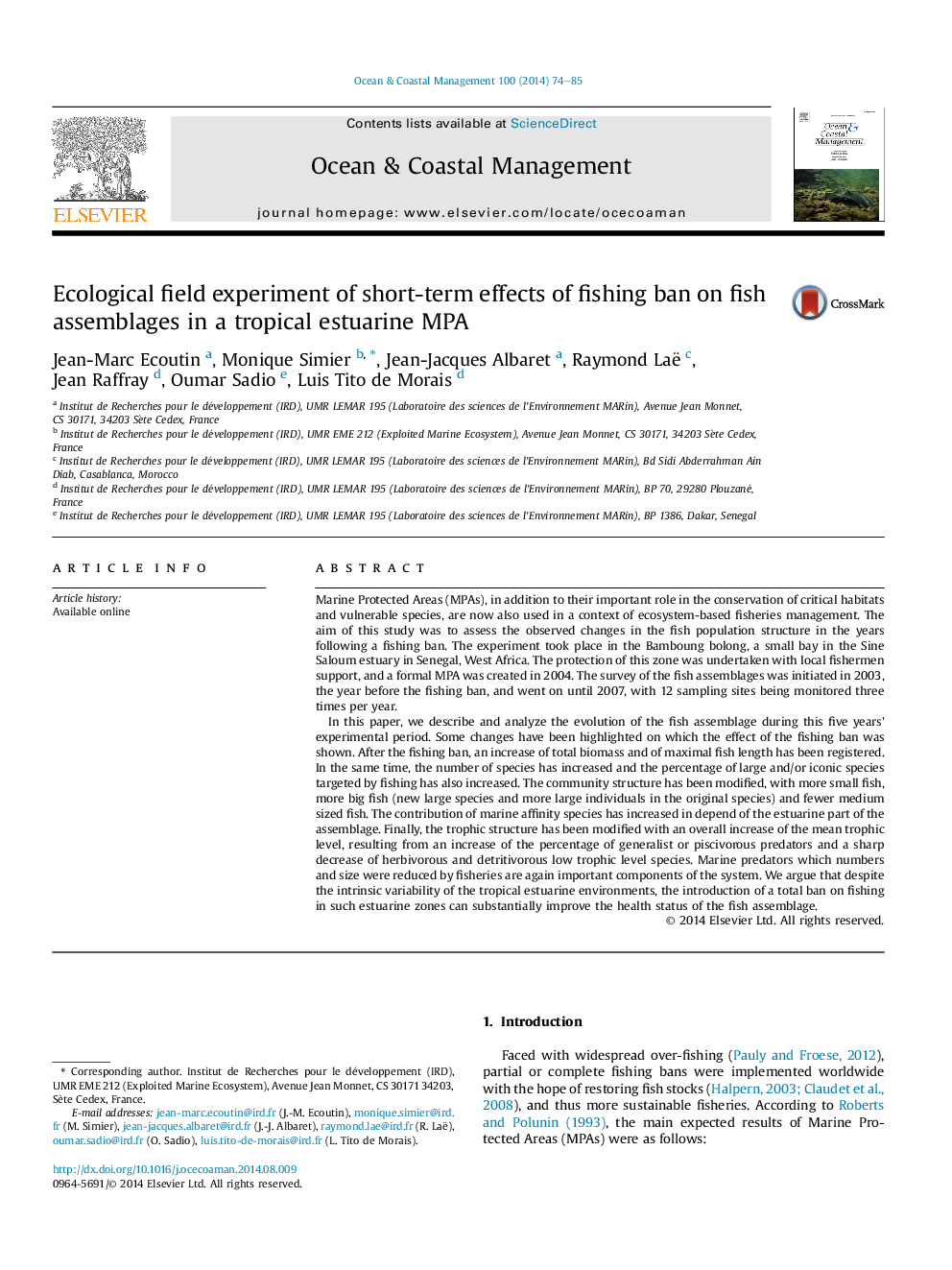| Article ID | Journal | Published Year | Pages | File Type |
|---|---|---|---|---|
| 8061536 | Ocean & Coastal Management | 2014 | 12 Pages |
Abstract
In this paper, we describe and analyze the evolution of the fish assemblage during this five years' experimental period. Some changes have been highlighted on which the effect of the fishing ban was shown. After the fishing ban, an increase of total biomass and of maximal fish length has been registered. In the same time, the number of species has increased and the percentage of large and/or iconic species targeted by fishing has also increased. The community structure has been modified, with more small fish, more big fish (new large species and more large individuals in the original species) and fewer medium sized fish. The contribution of marine affinity species has increased in depend of the estuarine part of the assemblage. Finally, the trophic structure has been modified with an overall increase of the mean trophic level, resulting from an increase of the percentage of generalist or piscivorous predators and a sharp decrease of herbivorous and detritivorous low trophic level species. Marine predators which numbers and size were reduced by fisheries are again important components of the system. We argue that despite the intrinsic variability of the tropical estuarine environments, the introduction of a total ban on fishing in such estuarine zones can substantially improve the health status of the fish assemblage.
Related Topics
Physical Sciences and Engineering
Earth and Planetary Sciences
Oceanography
Authors
Jean-Marc Ecoutin, Monique Simier, Jean-Jacques Albaret, Raymond Laë, Jean Raffray, Oumar Sadio, Luis Tito de Morais,
